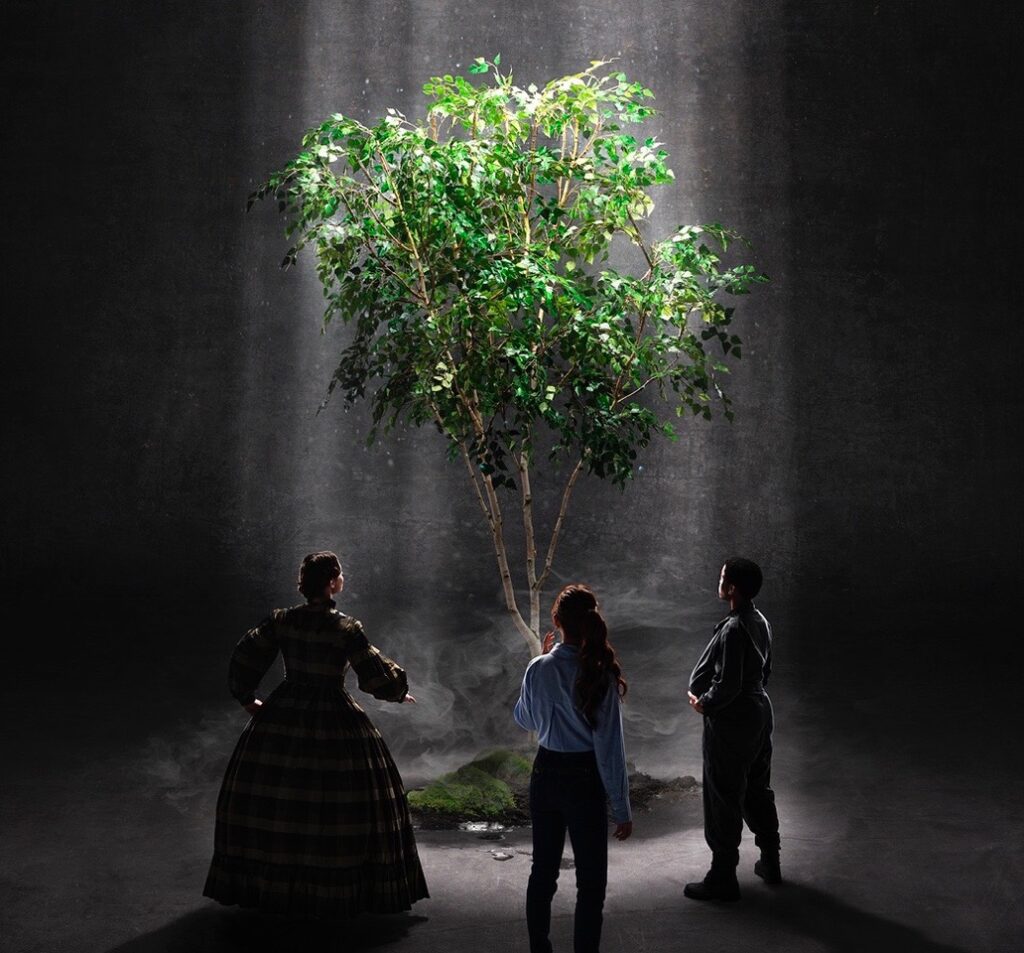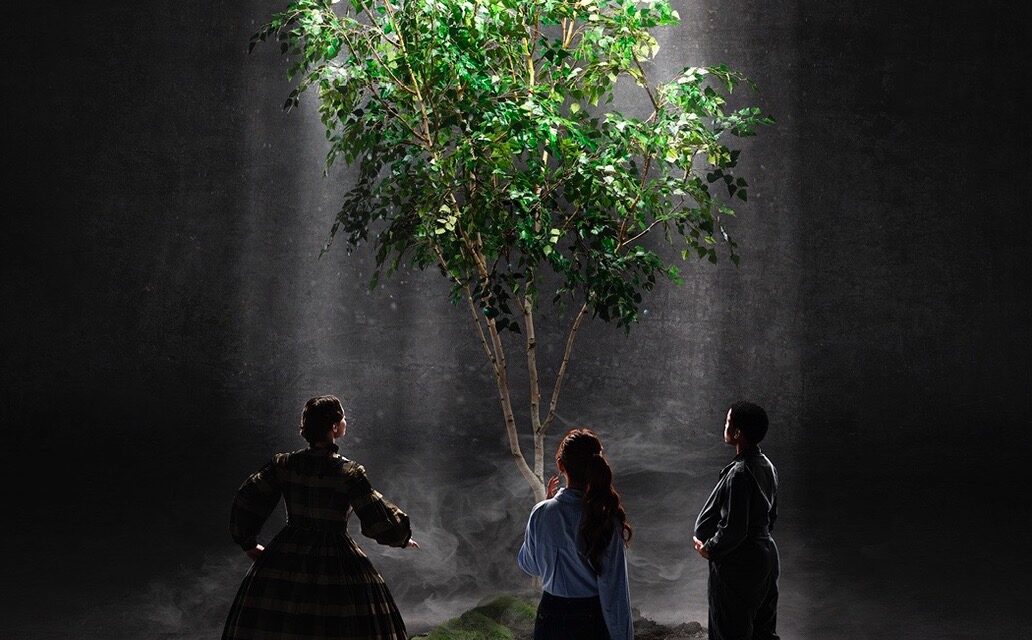
15 May – 7 June
Writer Flora Wilson Brown’s new play about climate change is a bold attempt to link the mid-nineteenth century with the 22nd through the lens of three couples each linked by the societal and meteorological challenges of their time and the environmental disasters they either foretell or experience for themselves. There is emphasis on the woman’s side of the story.
We meet Eunice Foote, mid-nineteenth century American scientist struggling to be taken seriously by the patriarchal scientific establishment. John is her husband. And although he is devoted enough it seems, he doesn’t really get the frustration she feels when she sees her pioneering work on CO2 published as that of a ‘hobbyist’.
We meet Claire, just two years from now in 2027, a middle manager at a PR agency currently designing tote bags for the likes of Greenpeace. Dan is her very new boyfriend/colleague who is turning up for work late but has charm enough to win her over.
And we meet Ana. It’s the year 2,100 and she is marooned with fellow employee John at the seed bank in Svalbard while a storm rages outside. They are desperately trying to find a crop seed resistant to flooding as they cope with the impending birth of the baby she is carrying, and the seed bank’s own floundering support system.
Set designer Aldo Vázquez helps us travel through time by means of three vertical semi-transparent panels that can slide apart or travel up, revealing or hiding parts of the stage and allowing for multiple entrances or abrupt scene changes. That these panels can also be lit separately, and indeed even allow water to run down from ceiling to floor is all the more arresting, adding a futuristic tone, especially to the Svalbard narrative.
Phoebe Thomas brings earnest zeal to her portrayal of Eunice Foote, convincing when claiming she has been in the company of God when realising the importance of her discovery in 1857. Matt Whitchurch plays her effusively supportive but innately sexist husband John, coming to terms with sharing a family with a woman whose primary interest doesn’t rest with him or their children. Nina Singh as Claire and Michael Salami as her boyfriend Dan take the contemporary (2027) slot, eliciting big laughs from the Old Vic audience for their dating banter, before the flooding near Dan’s mother’s home turns their world upside down. Salami rides his rollercoaster role well, happy dude one minute, tortured soul the next. Rosie Dwyer plays the futuristic scientist Ana with conviction. We feel her growing anxiety as the birth of her baby approaches and the only person on hand to help her is her geeky colleague Malcolm, given just the right amount of nervousness by James Bradwell.
Brown’s writing pitches all three couples together in a fast forward, fast rewind mash-up. The audience had to work to keep up as the changes kept coming. For the most part we got it. But there were moments where the speed of delivery was in danger of tripping the nuances of what was being said. Passages that gave more time to flesh out the characters inner feelings were the most effective. Claire’s reveal of Dan’s descent into mental health problems for instance, or Eunice’s reveal of her sense of distance to her children were riveting.
Ana’s epilogue touches on what many millennials and Gen Z’s are feeling right now – that they don’t even know if a future is possible. But Wilson, ultimately, presents us with hope – a flickering promise of survival.
★★★☆☆ Simon Bishop 22 May 2025
Photography credit: Michael Warley


